275 MacLaren Street, Ottawa, ON K2P 0L9
The main policy approach to addressing discrimination and racism has been through education, often termed anti-racism or cross-cultural awareness training, primarily focused on institutions such as schools, police services, government ministries, hospitals, etc. Efforts have been made to educate about human rights, examine institutional cultures looking at how they impact Aboriginal people and providing training that informs participants of Aboriginal history, culture, special status and contemporary issues. Fundamental to this approach has been the development of appropriate curriculum materials for use in the educational system. Several initiatives have been made in this regard such as the Teaching Treaties in the Classroom Kit developed in Saskatchewan. Eliminating inappropriate curriculum is also important. In service training and professional development for teachers is essential to qualify teachers to teach about Aboriginal culture as is connections to the urban Aboriginal community through the use of guest speakers, parent/community committees, audio-visual resources etc. Recent projects that address the related issue of bullying and the videos in the It Gets Better project which targets homophobia in schools and supports GLBT and Two –spirited students are having a positive impact. The formation of Aboriginal student groups can assist in establishing an Aboriginal presence and present their issues. The Truth and Reconciliation Commission Interim Report recommends that the issue of residential schools and their impacts be taught in schools (TRC Interim Report, 2012, p. 28). These initiatives can be effective only if they are encoded into policy, are well resourced and have the official backing of the educational administration at all levels.
The development of public awareness has been another important tool in addressing discrimination, either directly through media, public events, speakers` bureaus etc. or indirectly through educating people of the rights and issues of urban Aboriginal people and presenting a positive image in the media. The CBC radio program Trailblazers which reports on successful ventures of Aboriginal people is an example of the latter approach.
The formation of anti-racism groups in cities involving a diversity of representation including, official organizations such as City Councils, Chambers of Commerce, business leaders, educators, members of the public in partnership with Aboriginal agencies can be an important vehicle to raise the visibility of the issue and develop programs and events to attempt to lessen discrimination. Initiative that target specific locations where discrimination most frequently occurs, such as restaurants, retail stores etc. and particular groups such as landlords, police and security guards, employers etc. can address the issue where discrimination takes place.
Policy initiatives, cross-cultural training workshops, anti-racism initiatives and awareness campaigns can only be effective if there is sufficient reporting and enforcement. Human Rights Commissions, Ombudsman and other official groups require a broad enough mandate to report and publicize incidents of discrimination and follow through with appropriate consequences.
The research has demonstrated that addressing the issue of discrimination against Aboriginal people is a complex process and will take time to be successfully addressed. However, there is room for optimism in that urban Aboriginal people are increasingly becoming more upwardly mobile and successfully participating in the life in the city. Finally, the attitudes, for the majority of non-Aboriginal people, are changing to be more aware and accepting of Aboriginal people.